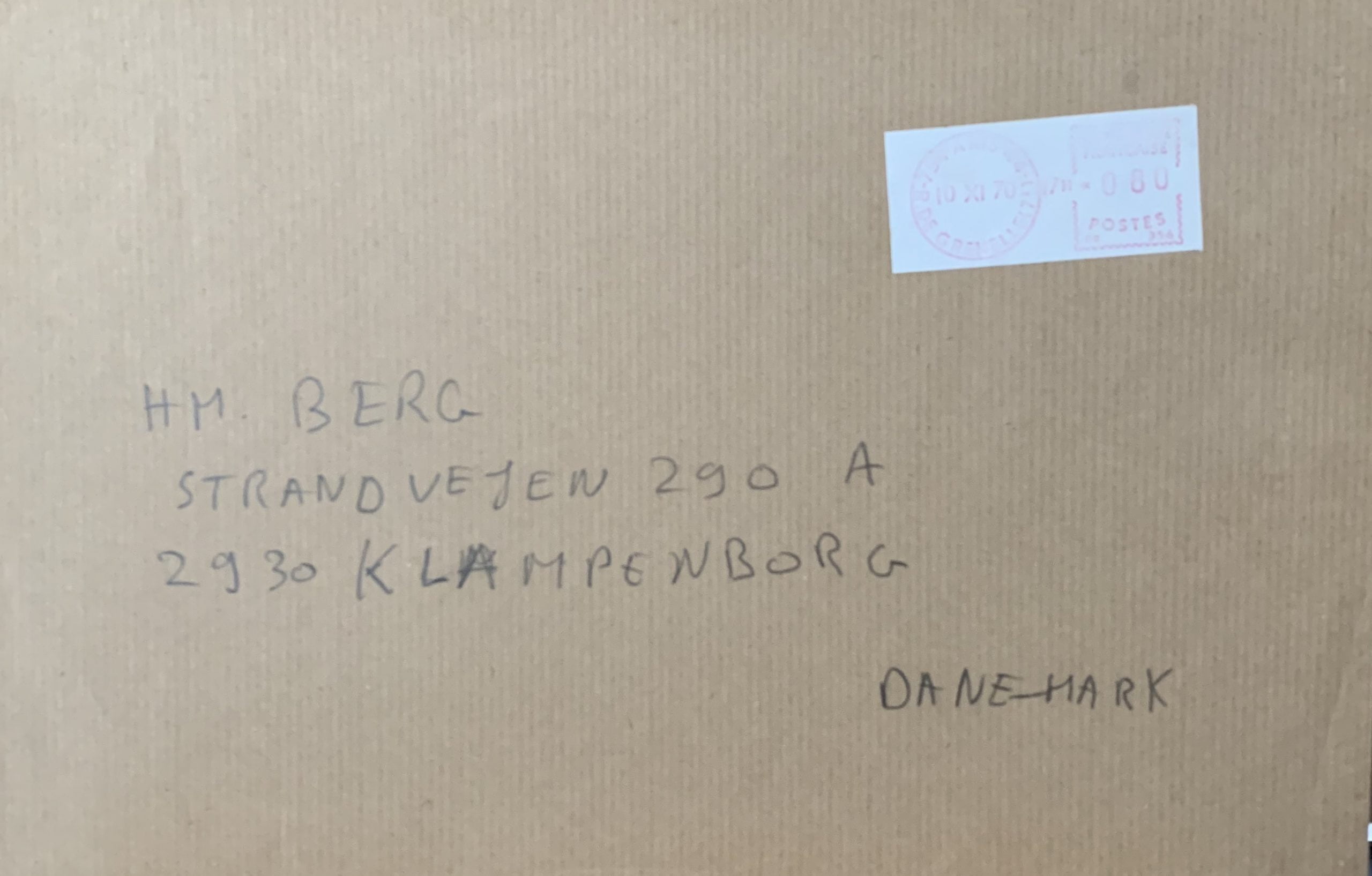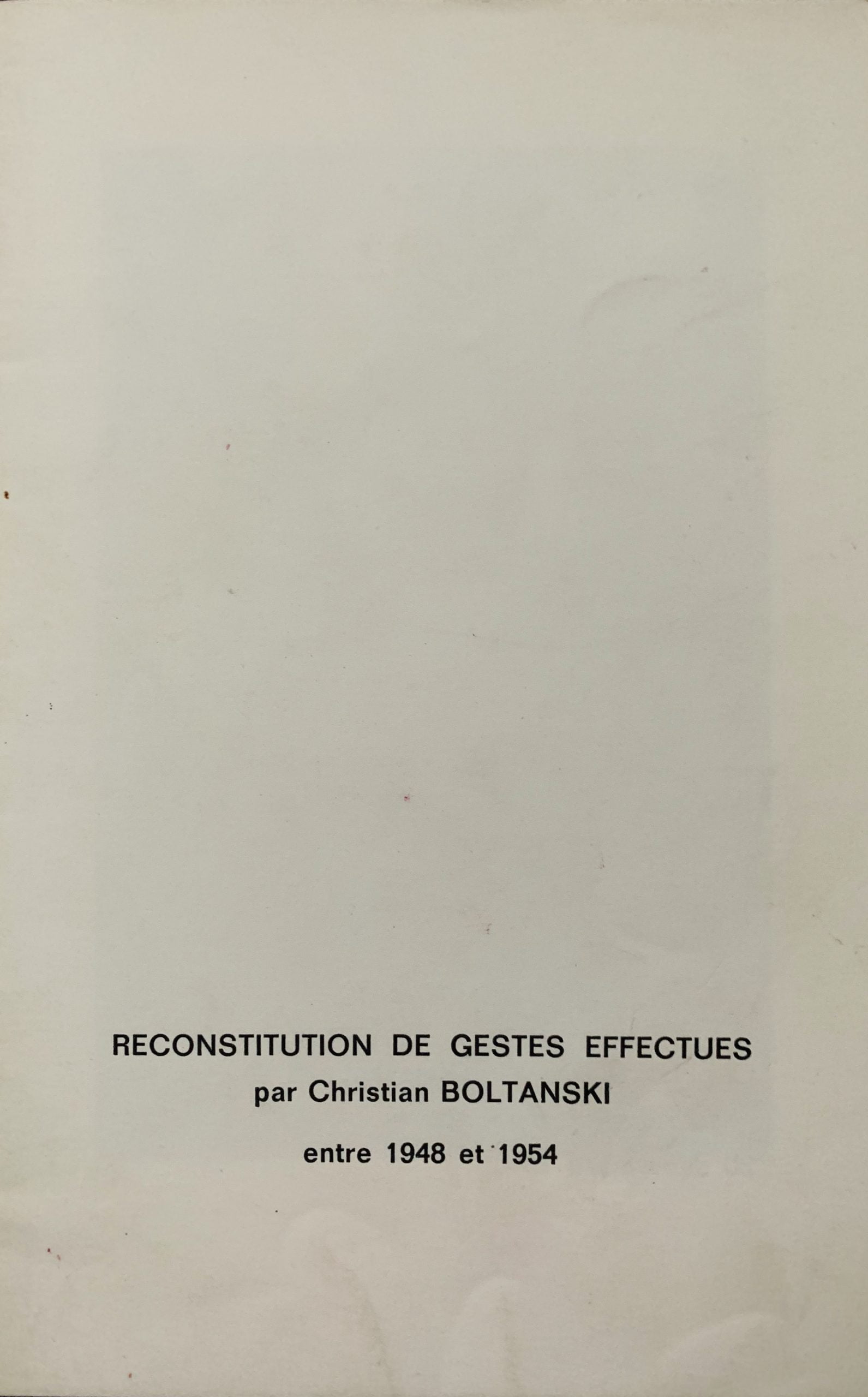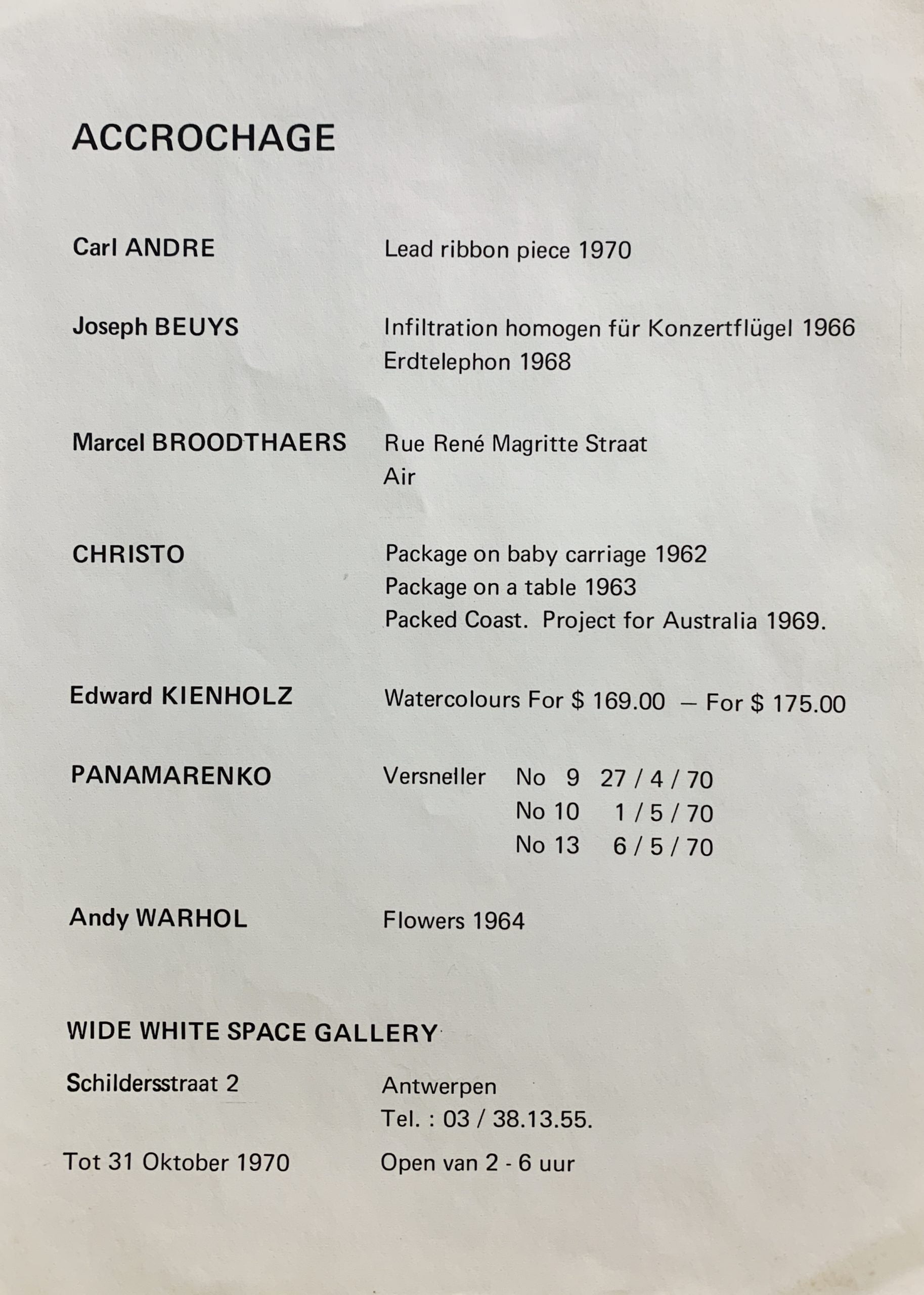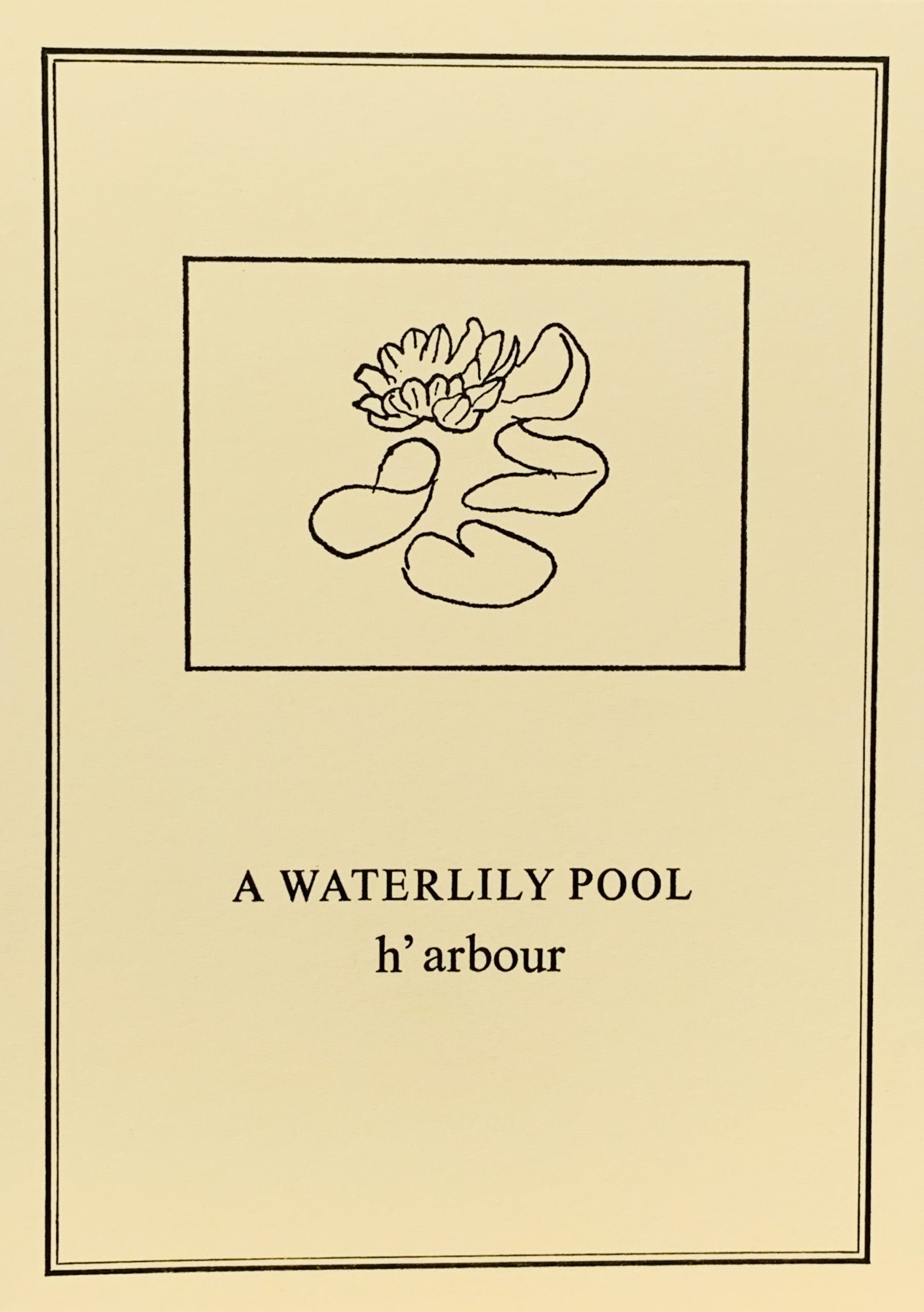14 Nov BOLTANSKI. 1970. ARTIST’S THIRD ONLY SOLO EXHIBITION – HERE AT BEN VAUTIER’S GALLERY.
Nice: Ben Doute de Tout, 1970
10.5 x 15cm, 1pp typographic announcement card which is also a conceptual work in itself. A series of adjectives are posed as questions about Boltanski and the exhibition. Words such as "Maniac?", "Pretentious?", "Sadistic?", "New?" in advance of the exhibition references doubt about whether the artist is pretending to be something/someone else and if his work is genuine? Ben's gallery was called in translation "Ben doubts everything" - and this rather matches that distrust of art and the world. Very scarce early card. VG+.
...














